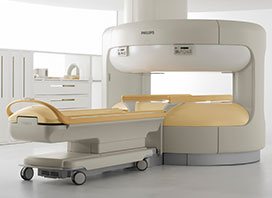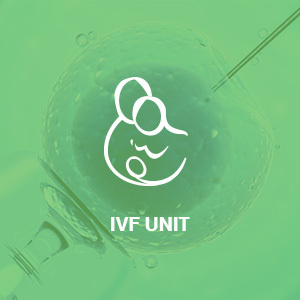BONE DENSITY CENTER

Over the age of 40 and especially during menopause, bone density reduces greatly in women. A limited reduction of bone mineral density is called osteopenia while an extended reduction is called osteoporosis.
Overall, the female-to-male ratio for bone problems is 4:1. 5% of women over the age of 50 suffer from osteoporosis. If osteoporosis mainly focuses on trabecular bones, like vertebrae, it leads to height loss and hunching.
However, if it focuses on cortical bones, then problems appear in long bones, like a femur. You should not forget that a fracture of the femoral head in elderly women may even lead to death.
Even though there are various methods, like CT scan or other simple side x-rays, which allow checking of bone mineral density up to a certain extent, everybody agrees that measuring bone mass with a dual-energy x-ray absorptiometry (DEXA) is the fastest way to it, using the less possible radiation.
Women that should have a DEXA scan include:
- Women under 65 years old, with menopause and one risk factor (weight < 57kg, personal or family history of fractures, smoking)
- All women over 65 years old • Women planning to receive or receiving treatment for low bone mass
- Women receiving hormone replacement therapy (or have been for prolonged periods)
- Women (or generally individuals) who will receive corticosteroids treatment for more than six (6) months or people with increased risk for osteoporotic fractures (see list)
- In general, women monitored or receiving treatment for bone mineral density disorders should regularly repeat bone densitometry (e.g. yearly). According to World Health Organization (WHO), two parts of the body are adequate for a bone densitometry. Vertebrae in the lumbar spine, back and hip. Bone mineral density (BMD) is measured in g/cm2 and is compared to that of young normal women. T-score shows the number of standard deviations below young women average.
Τ > 0 BMD better than normal
Τ = -1 to 0 Normal
Τ = -2.5 to -1 Osteopenia: Risk for osteoporosis in the future
Τ <-2,5 Osteoporosis: Treatment is needed and a check for fractures has to be performed
Characteristics that may increase the risk of Future Osteoporotic Fracture include:
- Weakness or lack of appetite
- Rapid menopause
- Rheumatoid Arthritis
- Smoking or alcohol
- Cushing’s syndrome
- Primary biliary cirrhosis
- Restricted mobility (elderly)
- Malabsorption
- Family osteoporosis
- Hyperparathyroidism
- Thyrotoxicosis and hypogonadism
- Corticosteroids
- Multiple Myeloma
- Fracture following a small injury
- Vertebral abnormalities
- Amenorrhea
- Mastocytosis


















